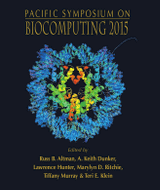
Menghua Wu1,2, Marina Sirota1, Atul J Butte1, Bin Chen1
1Division of Systems Medicine, Department of Pediatrics, Stanford University School of Medicine
2The Harker High School
Email: rachel.wu@gmail.com, msirota@stanford.edu, abutte@stanford.edu, binchen1@stanford.edu
Pacific Symposium on Biocomputing 20:68-79(2015)
Within the past few decades, drug combination therapy has been intensively studied in oncology and other complex disease areas, especially during the early drug discovery stage, as drug combinations have the potential to improve treatment response, minimize development of resistance or minimize adverse events. In the present, designing combination trials relies mainly on clinical and empirical experience. While empirical experience has indeed crafted efficacious combination therapy clinical trials (combination trials), however, garnering experience with patients can take a lifetime. The preliminary step to eliminating this barrier of time, then, is to understand the current state of combination trials. Thus, we present the first large-scale study of clinical trials (2008-2013) from ClinicalTrials.gov to compare combination trials to non-combination trials, with a focus on oncology. In this work, we developed a classifier to identify combination trials and oncology trials through natural language processing techniques. After clustering trials, we categorized them based on selected characteristics and observed trends present. Among the characteristics studied were primary purpose, funding source, endpoint measurement, allocation, and trial phase. We observe a higher prevalence of combination therapy in oncology (25.6% use combination trials) in comparison to other disease trials (6.9%). However, surprisingly the prevalence of combinations does not increase over the years. In addition, the trials supported by the NIH are significantly more likely to use combinations of drugs than those supported by industry. Our preliminary study of current combination trials may facilitate future trial design and move more preclinical combination studies to the clinical trial stage.